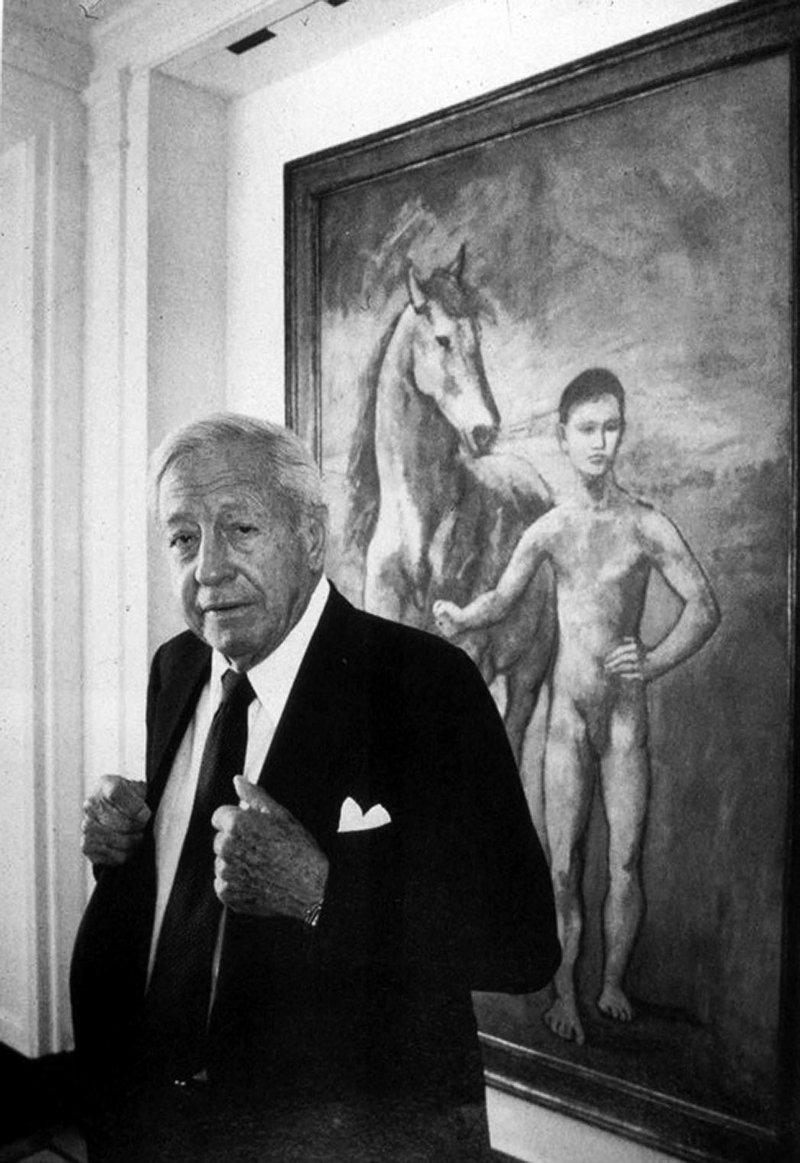William S. Paley bought these works to admire them. And their relative size is important to understanding the what and whys of the William S. Paley Collection, which goes on display Saturday at the Crystal Bridges Museum of American Art in Bentonville. The exhibit, called "The William S. Paley Collection: A Taste for Modernism," will be on show through July 7.
The works are generally salon-sized, says Niki Stewart, the museum's director of education and exhibits. In other words, "they fit on a wall in a house," she says.
FAQ
‘The William S. Paley Collection:
A Taste for Modernism’
WHEN — Saturday through July 7
WHERE — Crystal Bridges Museum of American Art in Bentonville
COST — $8 for the general public; free for members
INFO — 418-5700 or crystalbridges.org
When many wealthy collectors of his era were focusing on the classics, Stewart says, Paley showed an appreciation for the work of French modernists. His collection would come to include works by many now-famous artists -- Paul Cezanne, Pablo Picasso and Paul Gauguin, to name a few.
That Paley became an innovator in the art world should not surprise those who know his primary profession. Paley was a broadcast pioneer who took the Columbia Broadcasting System -- that's CBS -- from a network of 16 radio stations to a global entertainment provider.
"In his moment, in his time, he was on the cutting edge of technology. His time was in radio, then television," Stewart says.
The first work Paley ever purchased was Paul Cezanne's "Self-Portrait in a Straw Hat," acquired directly from the artist's son. He moved on to other French artists from there, snagging works by Edgar Degas, Gauguin, Henri Matisse, Henri de Toulouse-Lautrec and Picasso. He and Picasso would become friends. For many art fans, Picasso's name is revered. For Paley, he was another interesting artist.
"It's a foreign concept to us that someone was friends with Picasso," Stewart says.
As Paley's interest in art become more widely known, he took on a role at the Museum of Modern Art in New York City. He later became MoMA's president, and his collection was bequeathed to the museum following his death in 1990.
In the years since, his collection has traversed the globe, appearing at major art institutions for temporary display. Its most recent stop was the National Museum of Fine Arts in Quebec, Canada, where it was on display from Oct. 11 through Feb. 23. This will be the final tour destination for the Paley Collection before it returns to MoMA.
Stewart says a common request from Crystal Bridges patrons is for the museum to focus on international art, something the American art-focused museum does not often do. But courtesy of this kind of traveling exhibit, those guests can see works by European masters.
The nature of the collection alone is exciting, says Alissa Walls, assistant professor of contemporary art at the University of Arkansas. Much of the work that was made in Europe remains there, she says.
"There aren't that many works by impressionists in this country," she says. "To see the really good stuff, you've got to go to Paris."
But the Paley Collection specializes in European art, particularly by French artists, with modernism and cubism represented. Works of note include Toulouse-Lautrec's "M. de Lauradour," a portrait of a seated gentleman smoking a pipe; Gauguin's "Washerwomen," a colorful showcase of women cleaning clothes; and also Gauguin's "The Seed of the Areoi," a portrait of a nude woman on a brightly colored, tropical background.
Of particular interest for many will be Picasso's self-explanatory "Boy Leading a Horse," which shows his skills as a realist before his turn to cubism.
"It's as he's changing from one period to the next," Stewart says. "We get the sense, later, he purposely chose not to put it together. It shows how skilled he was."
Although this exhibit provides a rare opportunity to see classically European work, what's represented in the 60-piece Paley collection meshes well with the American art contained in Crystal Bridges' permanent collection, Stewart says.
Three rooms of the special exhibition wing inside the museum complex will house the Paley works, and a fourth room will showcase works owned by Crystal Bridges. The pieces from Crystal Bridges will show the deep ties between what was happening overseas and what was happening simultaneously closer to home, Stewart says, as the locally owned works were "often in response to, or inspired by, those (European) works."
Walls has not yet viewed the Paley Collection, which debuted after press time, but understands the aim of Crystal Bridges staff in drawing parallels between the European and American work.
"They are really different, but I'm sure there are correlations that people will see," she says.
As a further learning opportunity, the museum will offer an audio tour, which has been prepared by MoMA. Drop-in guided tours will take place at 1 p.m. Thursdays.
NAN What's Up on 03/14/2014
